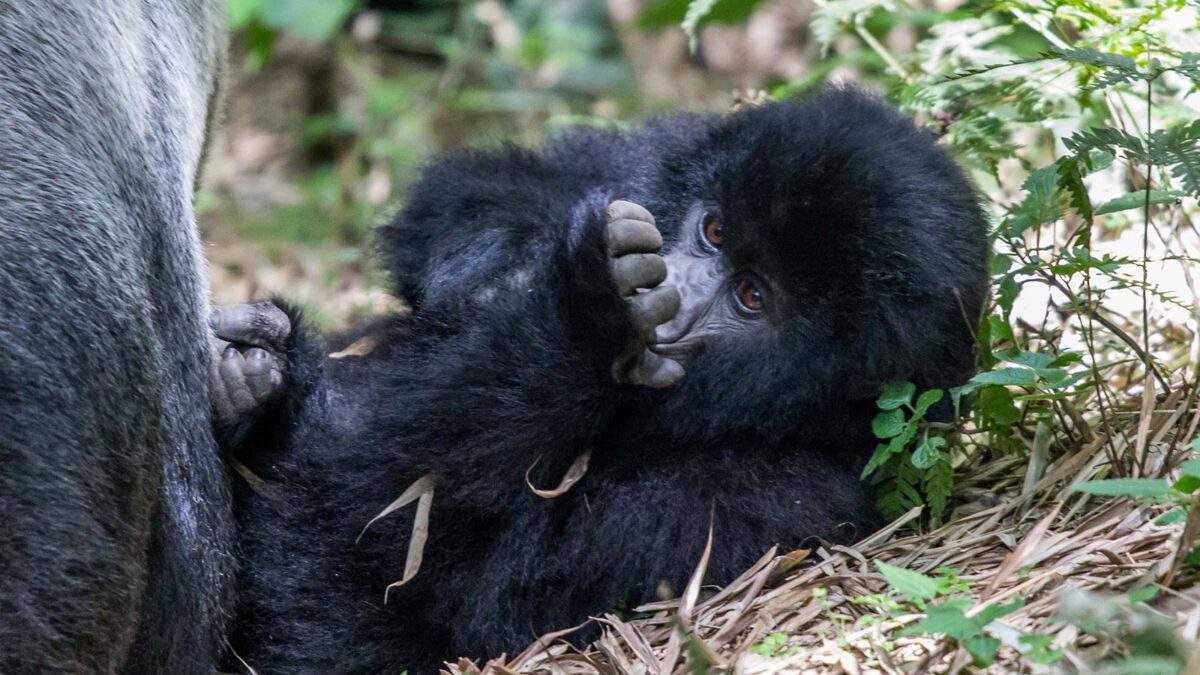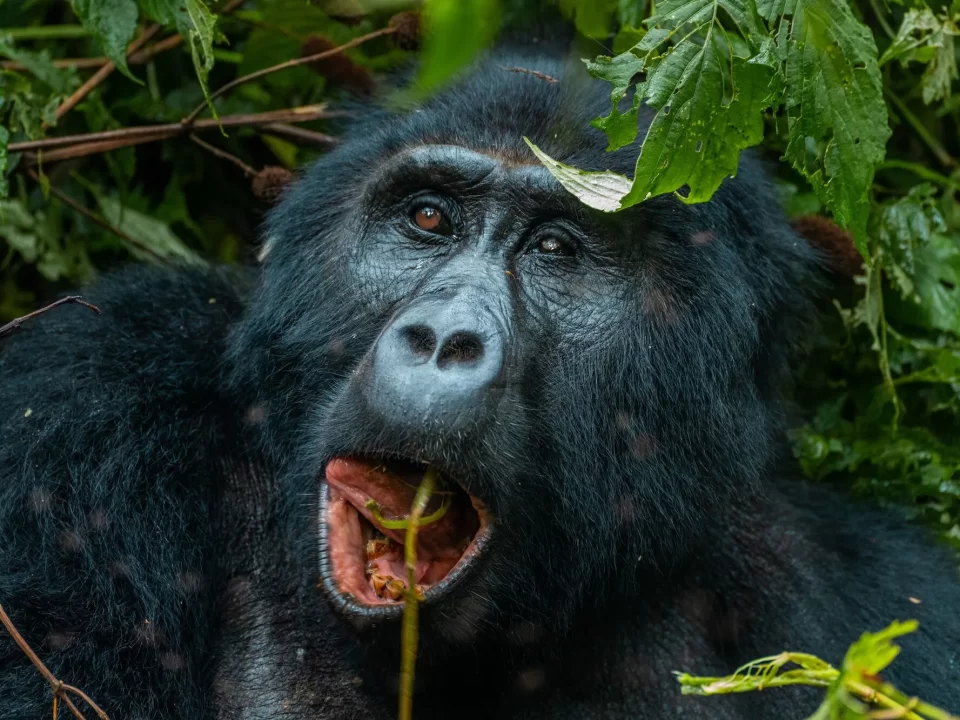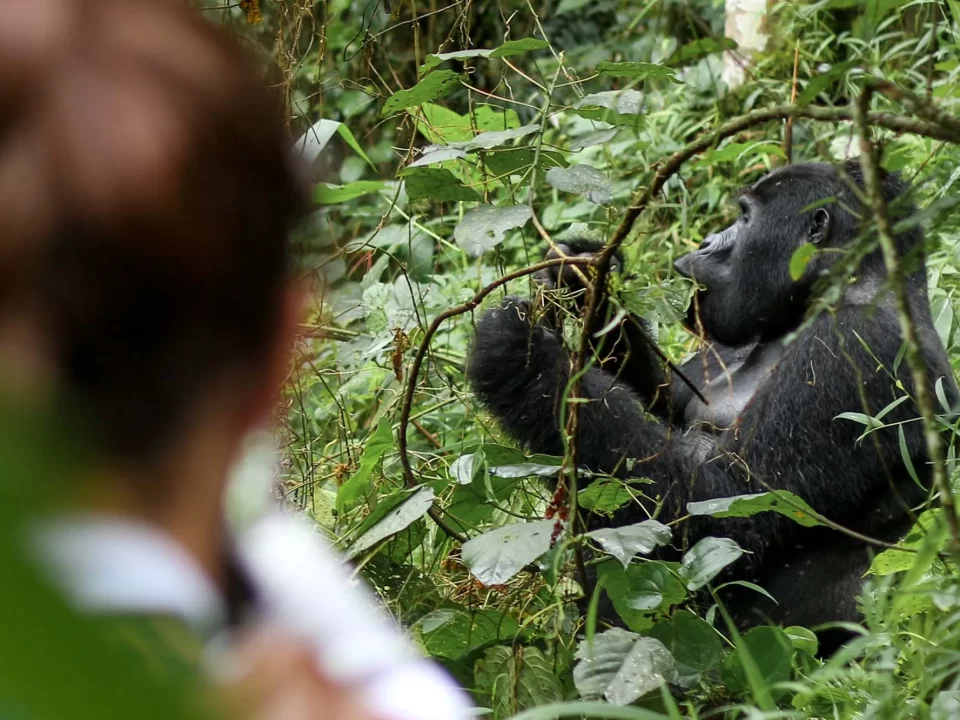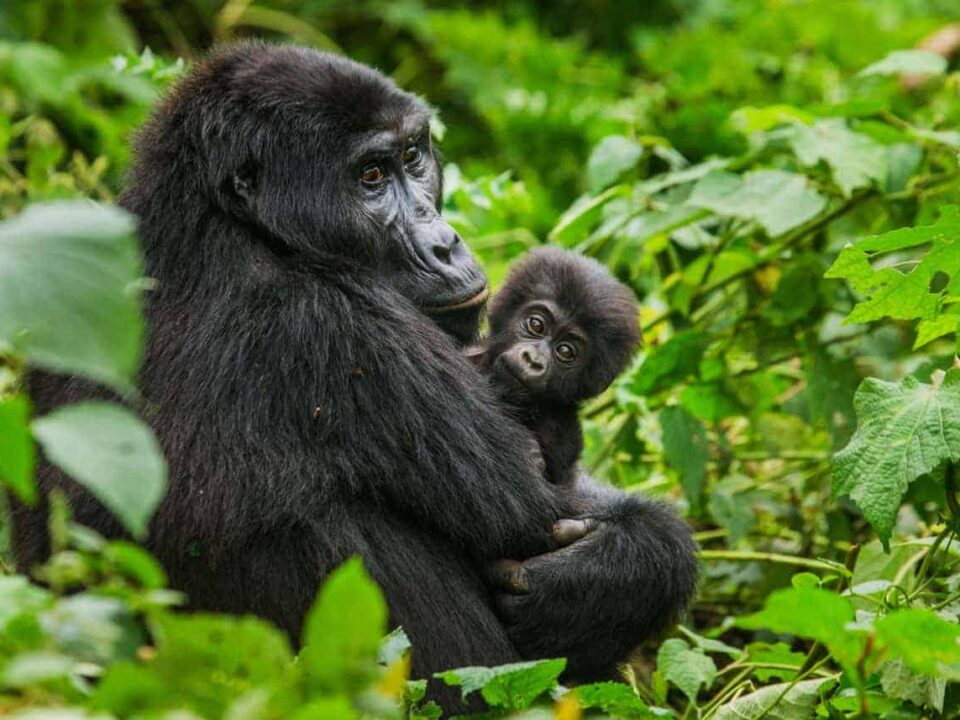
Best Time to Visit Nyungwe Forest National Park
September 13, 2023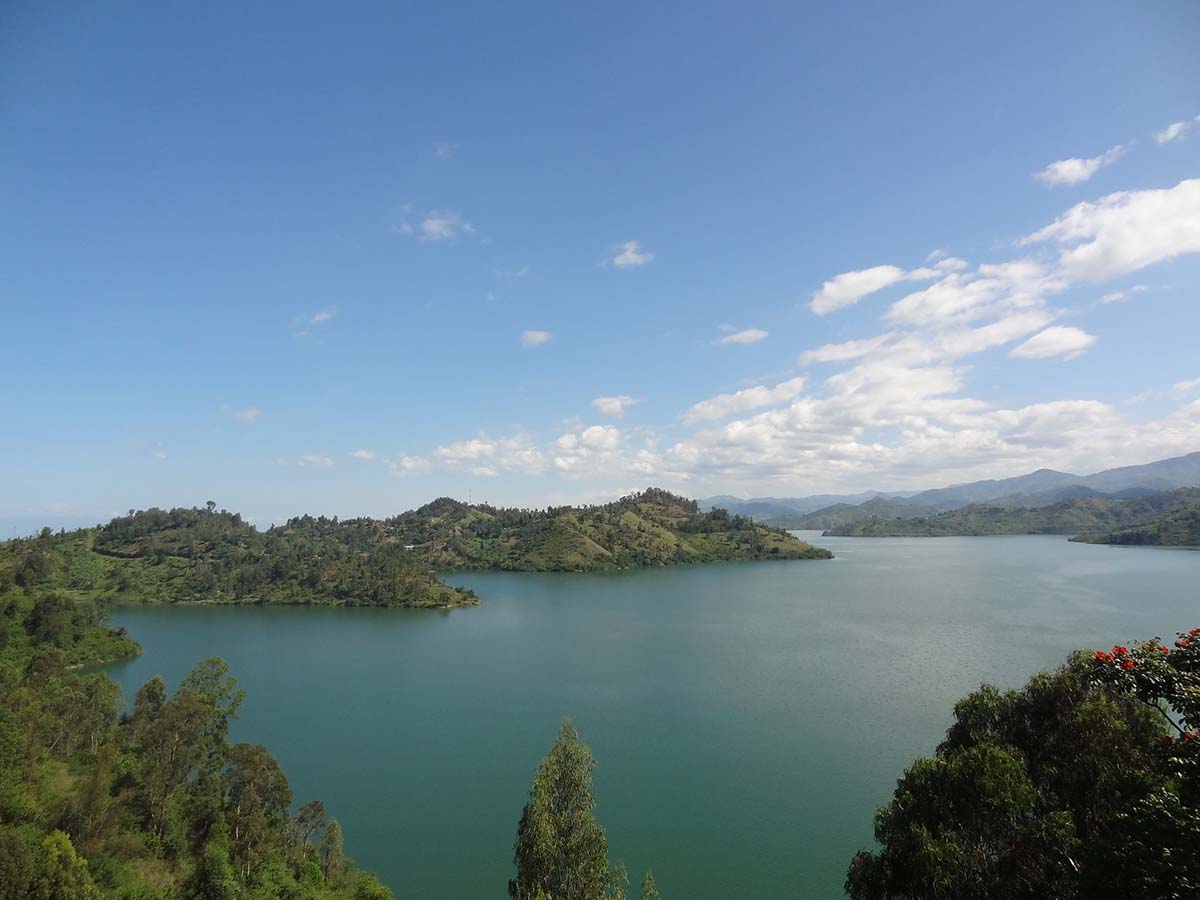
Things to do and see in Karongi Kibuye
September 13, 2023Affordable Gorilla Tracking in Rwanda – Volcanoes National Park
Gorilla tracking in Rwanda’s Volcanoes National Park presents a rare and thrilling opportunity to witness one of the world’s most magnificent creatures, the mountain gorilla. These gentle giants are not only the largest primate on Earth but also one of the most endangered species, with their survival hanging in the balance due to poaching and habitat destruction. In the wild, there are merely 840 mountain gorillas left, the majority of which reside in Rwanda and Uganda.
Unlike their smaller primate relatives that spend much of their lives in the treetops, mountain gorillas are terrestrial beings. They prefer open canopy forests where sunlight filters down to the forest floor. Their herbivorous diet consists of roots, leaves, vines, stems, and bamboo.
While mountain gorillas are capable of bipedal movement, they are primarily knuckle walkers, navigating the forest floor on all fours. Female gorillas select their breeding partners based on their protective capabilities, and gorilla groups can vary in size, ranging from a mated pair to groups of up to thirty individuals. On average, gorilla “families” consist of about nine members.
Male mountain gorillas can reach towering heights of approximately six feet and weigh up to 200 kilograms, while females are smaller, measuring under five feet and weighing around 100 kilograms. Despite their size, mountain gorillas tend to stay within a relatively confined area of their habitat.
Best Time for Affordable Gorilla Tracking in Rwanda
While gorilla tracking is possible year-round, the dry season stands out as the best time for this captivating adventure. The wet season not only makes hiking more challenging but also prompts gorillas to seek shelter, making them harder to observe.
The timing of the wet season varies depending on the country:
- Rwanda: The short wet season occurs from October to November, while the long wet season stretches from mid-March to June.
- Uganda: In Uganda, the wet seasons fall between March to May and September to November.
- Congo: North of the equator, the wet season spans from April to October, while south of the equator, it runs from November to March.
Fitness & Health for Affordable Gorilla Tracking in Rwanda
The duration of your hike to encounter a gorilla family can vary significantly. Some trekkers find gorillas within as little as 40 minutes, while others may spend up to seven hours on the trail. For this reason, it’s essential for all gorilla trekkers to be in good physical and mental condition. If you are ill, you are not permitted to participate in a gorilla trek, as gorillas can be vulnerable to human-borne illnesses.
Rules & Codes of Conduct
Observing gorillas in their natural habitat comes with responsibilities. These rules must be followed when tracking and observing gorillas:
- Always obey your guide’s instructions, as they are intimately familiar with the gorillas and will guide you to safe positions.
- Maintain a minimum distance of 7 meters (about 23 feet) between you and the gorillas at all times.
- If a dominant male gorilla (silverback) approaches or charges, do not back away. Remain where you are, crouched down in a submissive posture.
- Avoid sudden movements and loud noises.
- Never touch young gorillas, as this may provoke a confrontation with the dominant male.
- If a gorilla makes eye contact, do not hold it. Look away and down.
- Do not use flash when photographing gorillas and try to limit the number of photos taken.
- Only visit gorillas when you are in good health, as gorillas can be susceptible to human-borne respiratory infections.
- Each gorilla family can be visited once a day by groups of no more than eight people, and the visit is limited to a single hour.
- Smoking, drinking, eating, and littering are strictly prohibited within 200 meters of a gorilla family.
- Children under the age of fifteen cannot join gorilla trekking safaris.
While gorillas are not aggressive predators, they are wild animals capable of causing harm if they feel threatened. It is crucial to adhere to these rules for your safety and the well-being of the gorillas.
What to Wear for Affordable Gorilla Tracking in Rwanda
The trek through the rainforest to reach the gorillas can be physically demanding. Dressing appropriately and comfortably is essential for the journey. It is recommended to wear a long-sleeved shirt, trousers, and lightweight hiking boots to protect against scratches from the rugged terrain. While protective gloves are optional, they can be beneficial.
Given the varying temperatures throughout the day, bring a light jumper and a breathable rain jacket or poncho. A small backpack is handy for storing extra clothing, water, lunch, and photography equipment. Wearing neutral-colored, comfortable clothing is advised.
What to Bring for Your Gorilla Tracking in Volcanoes National Park
In addition to warm clothing and rain protection, consider these essentials for your gorilla safari:
- Backpack
- Warm sweater or light fleece
- Windbreaker or waterproof jacket
- Walking shoes or boots
- Long-sleeve dress shirt and trousers
- Sunglasses
- Hat or cap
- Sunscreen and lip balm
- Insect repellent
- Camera
- Binoculars
- Batteries and/or charger for your camera
- Flashlight or headlamp
- Guide books
- Phone and charger
For a memorable and affordable gorilla tracking experience in Rwanda’s Volcanoes National Park, contact Trek Africa Expeditions to plan your expedition. Witness these magnificent creatures in their natural habitat and contribute to their conservation efforts while creating memories that will last a lifetime.

